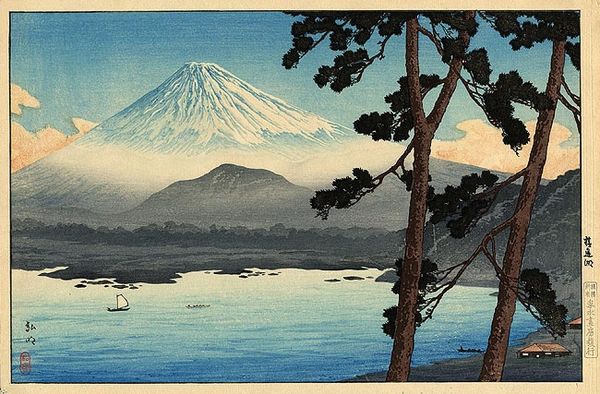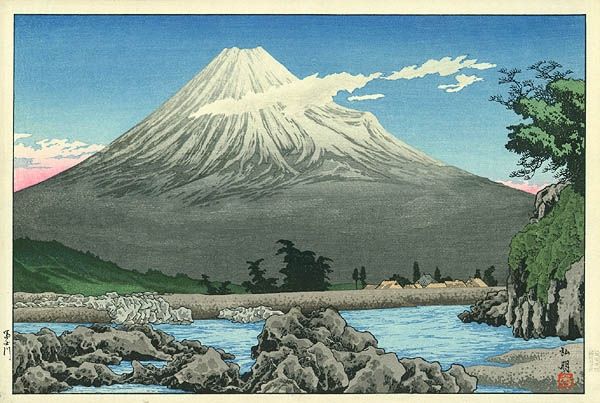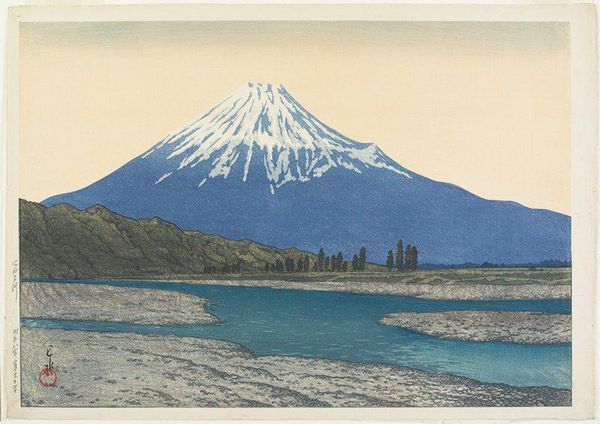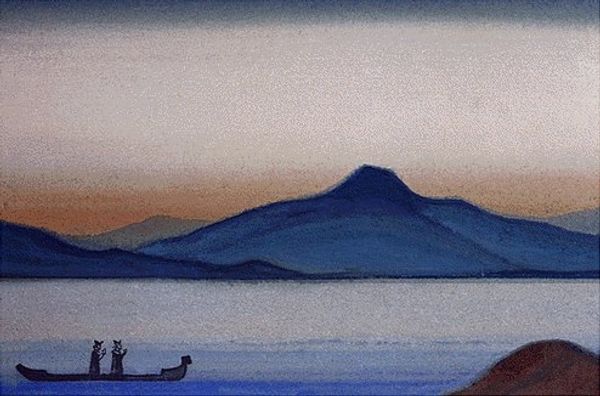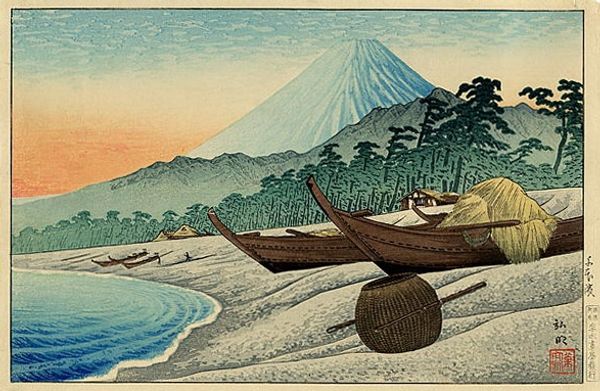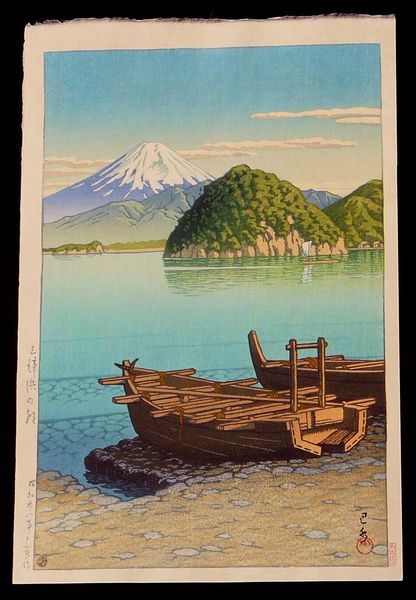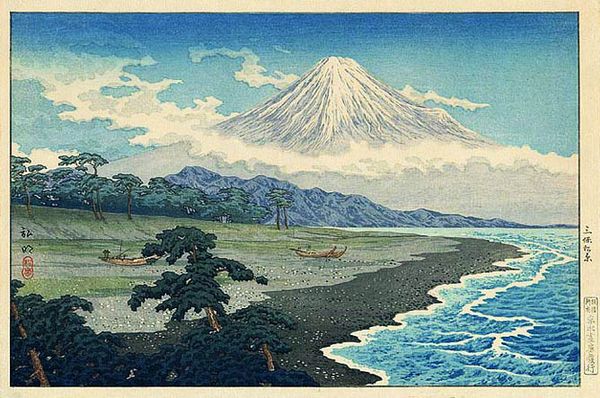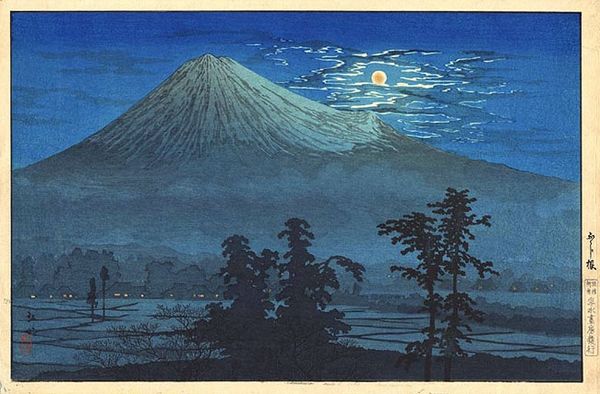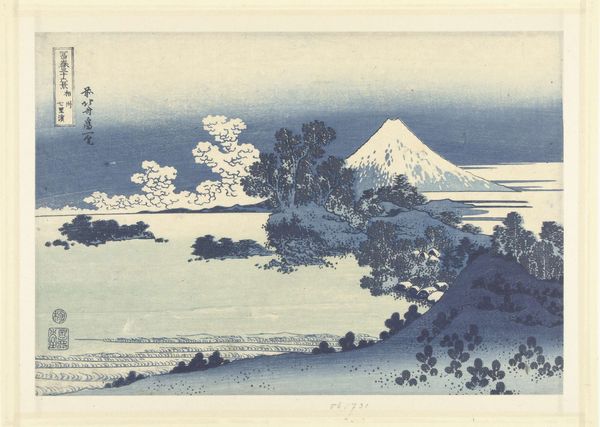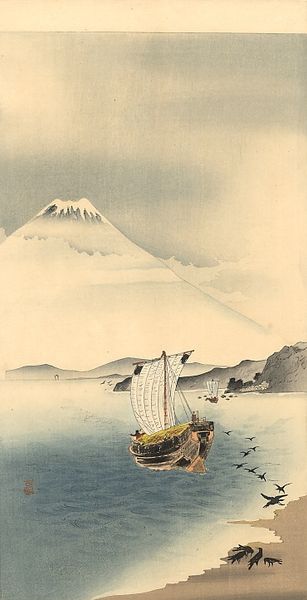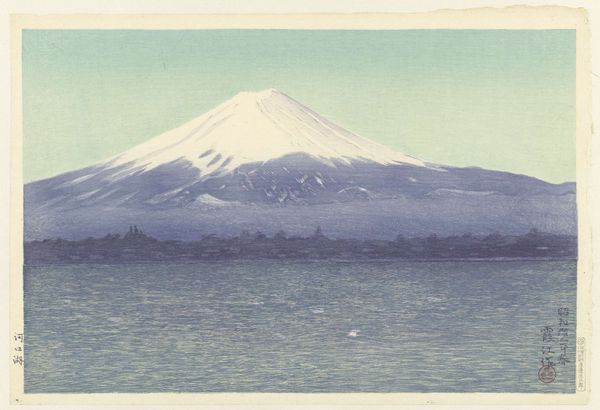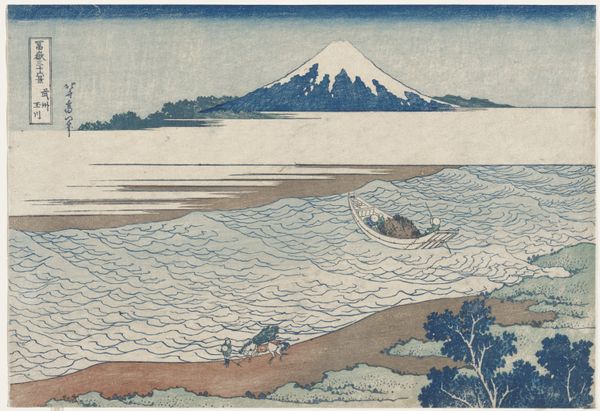
Copyright: Public domain
Editor: Yamamura Toyonari's "View of Fuji from Izumo," created in 1924, offers a peaceful watercolor scene. I’m really drawn to how the water reflects the pastel colors of the sky – it feels so calming. What’s your take on it? Curator: Calming, yes, but perhaps a little melancholic, too? The misty Fuji in the background… it’s like a memory, fading at the edges. You see how the artist uses soft washes? The mountains in the background frame a quiet cityscape, all reflected in the water. It evokes a fleeting moment, like a traveler pausing to appreciate the scene, only to leave again. Editor: It's interesting that you mention memory. It's true, it feels more dreamlike than real. Ukiyo-e wasn’t typically so… wistful, was it? Curator: Precisely. While rooted in Ukiyo-e traditions of landscape and cityscape, Yamamura moves away from bold outlines and toward a more impressionistic, ethereal feel. Think about how different this is from a Hokusai print. Where Hokusai grabs you by the collar, Yamamura whispers in your ear. Do you see the difference? Editor: I do! It's like Toyonari’s inviting you into his own personal moment of contemplation, rather than presenting a grand, definitive view. Curator: Exactly! Art isn't about merely copying nature but translating experience into a shared, yet unique perception of the world. Perhaps it mirrors how transient our memories can be; just like how this painter is creating his unique perception of reality. Editor: I hadn't thought of it that way! It really shifts my understanding of what the artist was trying to communicate. Curator: And isn’t that the best kind of art—the kind that makes you stop, ponder, and then see the world just a little bit differently?
Comments
No comments
Be the first to comment and join the conversation on the ultimate creative platform.
